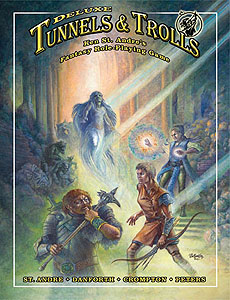
Tunnels & Trolls is a fantasy role-playing game designed by Ken St. Andre and first published in 1975 by Flying Buffalo. The second modern role-playing game published, it was written by Ken St. Andre to be a more accessible alternative to Dungeons & Dragons and is suitable for solitaire, group, and play-by-mail gameplay.

Fighting Fantasy is a series of single-player role-playing gamebooks created by Steve Jackson and Ian Livingstone. The first volume in the series was published in paperback by Puffin in 1982.
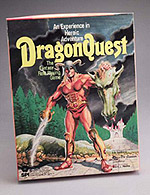
DragonQuest is a fantasy role-playing game originally published by Simulations Publications (SPI) in 1980. Where first generation fantasy role-playing games such as Dungeons & Dragons (D&D) restricted players to particular character classes, DragonQuest was one of the first games to utilize a system that emphasized skills, allowing more individual customization and a wider range of options.
The Dark Eye is a German tabletop role-playing game with a high fantasy theme created by Ulrich Kiesow and launched by Schmidt Spiel & Freizeit GmbH and Droemer Knaur Verlag in 1984. It is the most successful role-playing game on the German market, outselling Dungeons & Dragons. Many years of work on the game have led to a detailed and extensively described game world.

HeroQuest, is an adventure board game created by Milton Bradley in conjunction with the British company Games Workshop in 1989, and re-released in 2021. The game is loosely based around archetypes of fantasy role-playing games: the game itself was actually a game system, allowing the gamemaster to create dungeons of their own design using the provided game board, tiles, furnishings and figures. The game manual describes Morcar/Zargon as a former apprentice of Mentor, and the parchment text is read aloud from Mentor's perspective. Several expansions have been released, each adding new tiles, traps, artifacts, and monsters to the core system.

Mystic Towers is an isometric platform game developed by Animation F/X, and published in 1994 by Manaccom domestically and Apogee Software internationally. Originally exclusive to MS-DOS compatible operating systems, it was re-released on Steam in 2015 with Microsoft Windows and Mac OS support. It stars Baron Baldric, an old wizard with a magic staff and an array of amusing mannerisms, who must quest through twelve towers and rid them of monsters. Mystic Towers is a sequel to Baron Baldric: A Grave Adventure, a platform game in which Baron Baldric battled an evil sorcerer ancestor.
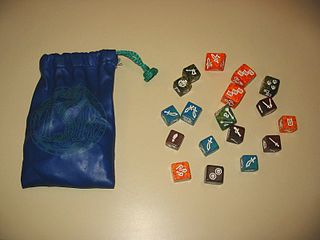
Dragon Dice is a collectible dice game originally made by TSR, Inc., and is produced today by SFR, Inc. It is one of only a handful of collectible dice games produced in the early 1990s. The races and monsters in Dragon Dice were created by Lester Smith and include some creatures unique to a fantasy setting and others familiar to the Dungeons & Dragons role-playing game.

The Questing Beast, or the Beast Glatisant, is a cross-animal monster appearing in many medieval texts of Arthurian legend and modern works inspired by them. In the French prose cycles, and consequently in the quasi-canon of Le Morte d'Arthur, the hunt for the Beast is the subject of quests futilely undertaken by King Pellinore and his family and finally achieved by Sir Palamedes and his companions.

Sorcery!, originally titled Steve Jackson's Sorcery!, is a single-player four-part adventure gamebook series written by Steve Jackson and illustrated by John Blanche. Originally published by Penguin Books between 1983 and 1985, the titles are part of the Fighting Fantasy canon, but were not allocated numbers within the original 59-book series. Sorcery! was re-published by Wizard Books in 2003 and recreated as the Sorcery! video game series by Inkle.
Fabled Lands is a series of fantasy gamebooks written by established gamebook authors Dave Morris and Jamie Thomson and published by Pan Books, a division of Macmillan in the mid 1990s. Cover art was by Kevin Jenkins with Russ Nicholson and Arun Pottier providing maps and illustrations.
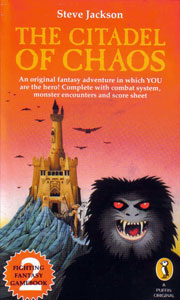
The Citadel of Chaos is a single-player adventure gamebook written by Steve Jackson and illustrated by Russ Nicholson. Originally published by Puffin Books in 1983, the title is the second gamebook in the Fighting Fantasy series. It was later republished by Wizard Books in 2002. The gamebook was also adapted into a video game.
Magic systems in games are the rules, limitations, abilities, and characteristics that define magic in a game.
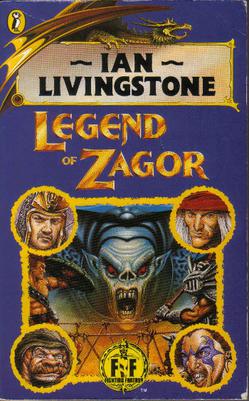
Legend of Zagor is a single-player roleplaying gamebook written by Carl Sargent, although it is credited to Ian Livingstone, illustrated by Martin McKenna and originally published in 1993 by Puffin Books. It was later republished by Wizard Books in 2004. It forms part of Steve Jackson and Ian Livingstone's Fighting Fantasy series. It is the 54th in the series in the original Puffin series (ISBN 0-14-036566-4) and 20th in the modern Wizard series (ISBN 1-84046-551-4).
The wizard is one of the standard character class in the Dungeons & Dragons fantasy role-playing game. A wizard uses arcane magic, and is considered less effective in melee combat than other classes.

Creature of Havoc is a single-player roleplaying gamebook written by British game designer Steve Jackson, illustrated by Alan Langford and originally published in 1986 by Puffin Books. It was later republished by Wizard Books in 2002. It forms part of Jackson and Ian Livingstone's fictional Fighting Fantasy series, and is the last Fighting Fantasy gamebook written by Jackson. It is the 24th in the series in the original Puffin series (ISBN 0-14-032040-7) and 4th in the modern Wizard series (ISBN 1-84046-391-0).

Dragon Warriors is a fantasy role playing game (RPG) system written by Dave Morris and Oliver Johnson and published by Corgi Books in 1985 and 1986. In 2009, it was re-collected in a new hardcover edition by Mongoose Publishing. This print run included the publication of several supplements to the Dragon Warrior's world "Legend". However, as of September 2010, this publication run had been discontinued but the books continue to remain available in PDF format.
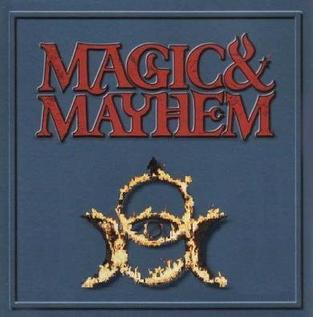
Magic & Mayhem is a fantasy/mythology-themed real-time strategy game designed by Julian Gollop and developed by Mythos Games. It was published by Virgin Interactive Entertainment in late 1998, and by Bethesda soon after in 1999. Although the game received generally positive criticisms, it met a quiet public reception.

Advanced Fighting Fantasy (AFF) is a British roleplaying game based on the Fighting Fantasy and Sorcery! gamebooks, first published in 1989. Just as the gamebooks, AFF is set in the world of Titan. A second edition of AFF was published in 2011.
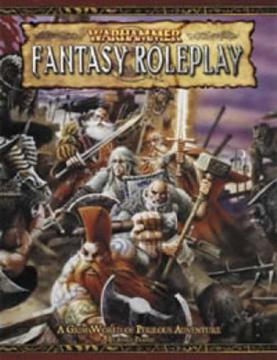
Warhammer Fantasy Roleplay or Warhammer Fantasy Role-Play is a role-playing game set in the Warhammer Fantasy setting, published by Games Workshop or its licensees.
Dungeons & Dragons: Adventures in the Forgotten Realms is an expansion set for Magic: The Gathering (Magic) released in July 2021. The world of the Forgotten Realms was created by game designer Ed Greenwood around 1967 as a paracosm for his childhood stories and premiered as a campaign setting for the Dungeons & Dragons (D&D) fantasy role-playing game in the Forgotten Realms Campaign Setting (1987). This expansion set is the third collaboration between Magic and D&D; both teams are part of Wizards of the Coast.













